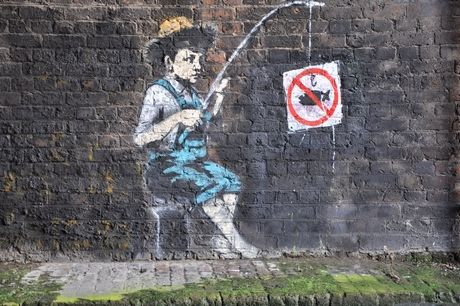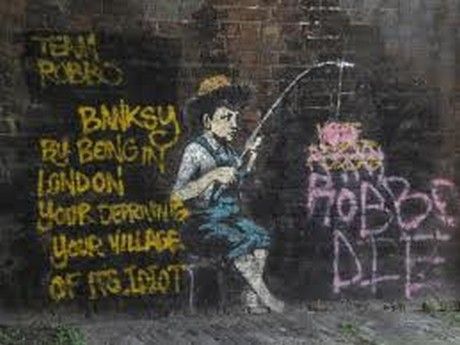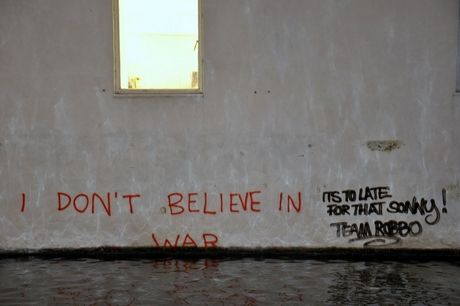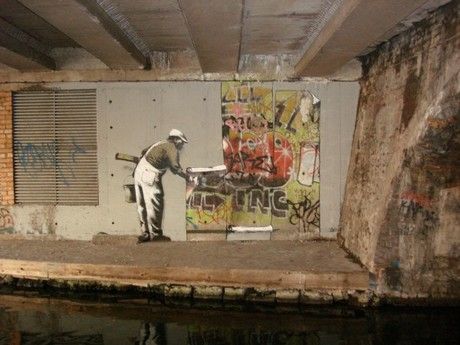War in the trenches of the UK street art scene: the notorious Banksy vs. veteran King Robbo. And the conflict continues ...
Written by Nikki Romano, Translated by Michael Βalaroutsos Architect.
In the neighborhoods of Bristol and London the fury between the two famous British Graffitist does not say to calmed down after viewing the documentary «Graffiti Wars 2011» by the British Channel 4.
Awaiting the next steps by the two camps because this game has no end.
In the unwritten rules among the graffitist's, the highest dishonor from being
"Tapped" of each other's work, does not exist.
Just imagine, then, to happen between the two leading British street artists.
The reason for the old school graffitist culminated in '80s King Robbo and the famous master
of the stencil, Banksy.
of the stencil, Banksy.
There were the savages to expel domesticated, says his faithful team of King Robbo, while Banksy, participating in various festivals, winning awards and his reputation spread all around of the earth.
On the one hand we have the legend of King Robbo and on the other the famous Banksy.
The one handle the spray as if it were an extension of his hand and the other distinguishes for his talents in the technique of stencil.
The one is a veteran of graffitist's and the other "gurus" of street art. As a matter of ideology, like saying, I am with Liverpool and you are with Everton.
What is unites them, however, as all the underground art scene of the wall, is the chase by the police and the handkerchiefs in face.
Thus, no public statements and appearances, created a myth around this lock which endeavor to preserve the faithful followers.
To take it from the beginning, it all started in 2009 when Banksy «stepped" with a symbolic of his famous stencil graffiti of King Robbo canal area Regent of London dating from 1985.
Nobody until then did not dared to tamper the work of the veteran British graffitist and so this move of Banksy it was considered sacrilege.
Immediately, fans of the King Robbo built the team «Team Robbo» and went on the offensive, destroying his creations in the birthplace of Banksy, Bristol.
The unaltered state continued in the neighborhoods of London underground until the lock got rough dimensions to to be beaten King Robbo too wild outside his home last summer, and
hopefully to exceed finally the coma.
hopefully to exceed finally the coma.
Both sides have complied of course silent until the documentary «Graffiti Wars 2011» which was broadcast by the British Channel 4 a few weeks ago.So the conflict began again.
This cinematic record of the Contras of two famous graffiti starts by aligning Picasso versus Matisse and takes a clear position with the balance leaning in favor of King Robbo.
And if they both move the boundaries of illegality, participants in the documentary leaves clear suspicion that the authorities turn a blind eye only when is projects of Banksy.
The definitive "hit" for Banksy comes when talking about a serious attack with beatings on the head of King Robbo.
This did not pass so, and the phantom of stencil sent a protest letter to the channel, accusing the leaders of documentary about inaccuracies and arbitrariness. That's all for now. The sequel ....... on the walls.









